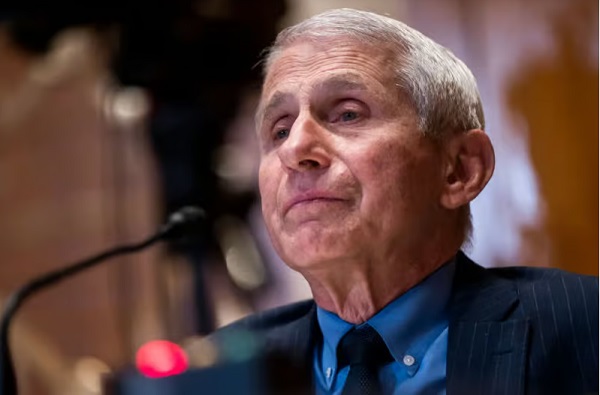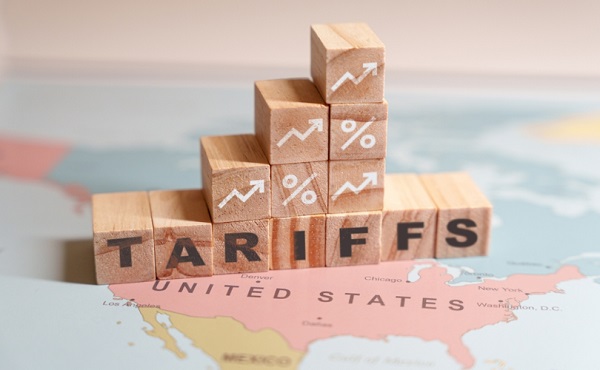Economy
Carney’s Promise of Expediting Resource Projects Feels Like a Modern Version of the Wicked Stepmother from Disney’s Cinderella

From Energy Now
By Tammy Nemeth
Canada’s ongoing saga around interminable delays for infrastructure and resource development has not necessarily improved under Mark Carney’s Liberal government. Hopes were raised in oil, gas, and mining boardrooms with the seemingly sensible words coming from Natural Resources Minister Tim Hodgson and Prime Minister Carney himself about expediting projects and developing Canada as a (clean) and conventional energy superpower. But that “clean” part is usually whispered like a corporate secret, possibly in the hope that Alberta and others won’t notice. This situation feels like a modern version of Cinderella, where promises come from the wicked stepmother with impossible conditions: The big “IF”.
In Disney’s 1950 animated film Cinderella, there is a scene where Cinderella presents an invitation to the royal ball to her stepmother, Lady Tremaine. Despite Cinderella’s eligibility, Lady Tremaine imposes a condition: She may attend only IF she completes an overwhelming list of chores. This disingenuous offer, cloaked in fairness, ensures Cinderella’s exclusion, much to the delight of her jealous stepsisters. Similarly, Canada’s resource development process appears to promise opportunity while imposing conditions that may prove unattainable.
The premiers from all the provinces were invited by the Prime Minister to come cap-in-hand with a list of projects they feel are in the “national interest”. Some suggested it was like giving a business pitch to the panel at Dragon’s Den. Hardly an appropriate situation to be in for the First Ministers of the Federation. It is a revealing indication of how far the consideration of the Premiers has fallen in the esteem of Ottawa and its media mouthpieces. Nevertheless, the Premiers duly arrived in Saskatoon to have a conversation about Ottawa’s ambitions for Canadian resource and industrial development and presented their list of projects. Most left the meeting hoping for the best.
Later that day, Prime Minister Carney released his criteria for acceptable projects, which are quite vague—the devil is always in the details. From the Prime Minister’s website:
“As a first step, First Ministers discussed projects of national interest which fit the following criteria, subject to consultation with Indigenous Peoples whose rights may be affected:
- Strengthen Canada’s autonomy, resilience, and security.
- Offer undeniable benefits to Canada and support economic growth.
- Have a high likelihood of successful execution.
- Are a high priority for Indigenous leaders.
- Have clean growth potential, such as the use of clean technologies and sustainable practices.”
These general statements leave a great deal open to interpretation and much of it is in the eye of the beholder. For example, Quebec will not join a consensus or support any project for which it doesn’t receive a direct benefit in terms of ongoing employment, royalty sharing, or other revenue.
As for conventional energy, Prime Minister Carney said he supports decarbonized oil. This would be a nod to the proposed Carbon Capture Storage (CCS) project of the Pathways Alliance, an incredibly expensive proposition for which the alliance is seeking various tax breaks and inducements to commit to the multi-billion dollar endeavour. It seems that support for an oil pipeline to the east or west would only tentatively come once that CCS project is complete or nearing completion.
Carney also says that there needs to be a “national consensus” on projects in order to be short listed. Who decides what is in the national interest or if a “national consensus” exists? Well, that would be the Prime Minister’s squad in Ottawa. What criteria or metrics will be used for those determinations? No one outside Carney’s circle knows. Prime Minister Carney said recently there would be a “process put in place to arrive at a [national] consensus” on projects.
If the Premiers thought these important details might be clarified in the implementing legislation, then they thought wrong. Bill C-5, the One Canadian Economy Act, merely codifies the five generic principles, mentions “energy” generally (which can be interpreted many ways), and does nothing to solve the problems with existing legislation that has created the regulatory morass for projects in the first place. Creating a “fast track” for only certain politically select projects, to bypass issues with the “regular track”, proves the existing system is too slow and ought to be corrected: Politically selected exceptions do not solve systemic problems.
The legislation also grants Cabinet sole power and discretion without any scrutiny or transparency on the decisions: “in respect of a project, the Governor in Council [Cabinet] may consider any factor that the Governor in Council considers relevant…” [emphasis added]. That is a very broad power that can be wielded in any number of ways, including forcing uneconomic high voltage electricity interconnections from eastern Canada to western provinces like Saskatchewan and Alberta. Essentially, Cabinet can do whatever it wants with respect to so-called “national” projects and is protected by Cabinet confidence in making those decisions.
Canadian premiers and the oil, gas, and mining companies are being confronted with a whole lot of “IFs” for potential projects all of which will be left to the arbitrary and secretive discretion of Cabinet. Which company will put the investment of time and money into an application process that has so many potential arbitrary and capricious ways to be rejected? So far, Canada’s process under its net zero by 2050 framework has been like betting on Cinderella to make the ball without a fairy godmother.
Prime Minister Carney is saying he encourages resource development applications but is offering several conditions that may prove impossible to meet for Alberta, Saskatchewan, and resource companies. Resource companies, wary of investing in a process rife with uncertainty, may hesitate to commit resources to projects that face rejection on subjective and capricious grounds. If Canada wants to dance at the global energy ball, it needs clear procedural and regulatory rules, not a wicked stepmother’s to-do list.
As Jess Kline of the National Post says, the criteria, “pretty much gives politicians licence to reject any project for any reason at all.” While many may be cautiously optimistic that such arbitrariness will be overcome by pragmatism and the realities of an economy hungry for reliable affordable energy, could it be that Canada’s resource development is facing the veiled meanness of a wicked stepmother?
Ambiguity is the enemy of action. Canada needs a clear, fair, timely approval process that balances environmental goals with economic needs. Without it, provinces and industries may stay stuck in an ongoing story where opportunities are promised but never delivered.
Tammy Nemeth is a U.K.-based energy analyst
Business
The carbon tax’s last stand – and what comes after

From Resource Works
How a clever idea lost its shine
For years, Canada’s political class sold us on the idea that carbon taxes were clever policy. Not just a tool to cut emissions, but a fair one – tax the polluters, then cycle the money back to regular folks, especially those with thinner wallets.
It wasn’t a perfect system. The focus-group-tested line embraced for years by the Trudeau Liberals made no sense at all: we’re taxing you so we can put more money back in your pocketbooks. What the hell? If you care so much about my taxes being low, just cut them already. Somehow, it took years and years of this line being repeated for its internal contradiction to become evident to all.
Yet, even many strategic conservative minds could see the thinking had internal logic. You could sell it at a town hall. As an editorial team member at an influential news organization when B.C. got its carbon tax in 2008, I bought into the concept too.
And now? That whole model has been thrown overboard, by the very parties had long defended it with a straight face and an arch tone. In both Ottawa and Victoria in 2025, progressive governments facing political survival abandoned the idea of climate policy as a matter of fairness, opting instead for tactical concessions meant to blunt the momentum of their foes.
The result: lower-income Canadians who had grown accustomed to carbon tax rebates as a dependable backstop are waking up to find the support gone. And higher earners? They just got a tidy little gift from the state.
The betrayal is worse in B.C.
This new chart from economist Ken Peacock tells the story. He shared it last week at the B.C. Chamber of Commerce annual gathering in Nanaimo.
 Ken-Peacock- B.C. Chamber of Commerce annual gathering in Nanaimo.
Ken-Peacock- B.C. Chamber of Commerce annual gathering in Nanaimo.
What is shows is that scrapping the carbon tax means the poor are poorer. The treasury is emptier.
What about the rich?
Yup, you guessed it: richer.
Scrubbing the B.C. consumer carbon tax leaves the lowest earning 20 percent of households $830 per year poorer, while the top one-fifth gain $959.
“Climate leader” British Columbia’s approach was supposed to be the gold standard: a revenue-neutral carbon tax, accepted by industry, supported by voters, and engineered to send the right price signal without growing the size of government.
That pact broke somewhere along the way.
Instead of returning the money, the provincial government slowly transformed the tax into a $2 billion annual cash cow. And when Mark Carney won the federal election, B.C. Premier David Eby, boxed in by his own pledge, scrapped the tax like a man dropping ballast from a sinking balloon. Gone. No replacement. No protections for those who need them most.
Filling the gas tank, on the other hand, is noticeably cheaper. Of course, if you can’t afford a car that might not be apparent.
Spare a thought for the climate activists who spent 15 years flogging this policy, only to watch it get tossed aside like a stack of briefing notes on a Friday afternoon.
Who could not conclude that the environmental left has been played. For a political movement that prides itself on idealism, it’s a brutal lesson in realpolitik: when power’s on the line, principles are negotiable.
But here’s the thing: maybe the carbon tax model deserved a rethink. Maybe it’s time for a grown-up look at what actually works
With B.C. now reviewing its CleanBC policies, here’s a basic question: what’s working, and what’s not?
A lot of emission reductions in this province didn’t come from government fiat. They were the result of business-led innovation: more efficient technology, cleaner fuels, and capital discipline.
That, plus a hefty dose of offshoring. We’ve pushed our industrial emissions onto other jurisdictions, then shipped the finished goods back without attaching any climate cost. This contradiction particularly helped to fuel the push to dump carbon pricing as a failed solution.
The progressives’ choice was made once the anti-tax arguments could no longer be refuted: to limit losses it would be necessary to deep six an unpopular strand of the overall carbon strategy. This, to save the rest. That’s why policies like the federal emissions cap haven’t also been abandoned.
To give another example, it’s also why British Columbia’s aviation sector is in a flap over the issue of sustainable aviation fuel. Despite years of aspirational policy, low emissions jet fuel blends remain more scarce than a long-haul cabin upgrade. The policy’s designers correctly anticipated that refiners would never be able to meet the imposed demand, and so as an alternative they provided a complex carbon credit trading scheme that will make the cost of flying more expensive. For those with a choice, nearby airport hubs in the United States where these policies do not apply will become an attractive alternative, while remote communities that have no choice in the matter will simply have to eat the cost. (Needless to say, if emissions reduction is your goal this policy isn’t needed anyways, since the decisions that matter in reducing global aviation emissions aren’t made in B.C. and never will be.)
I’m not showing up to bash those who have been genuinely trying to figure things out, and found themselves in a world of policy that is more complicated and unpredictable than they realized. Simply put, the chapter is closing on an era of energy policy naïveté.
The brutally honest action by Eby and Carney to eject carbon taxes for their own political survival could be read as a signal that it’s now okay to have an honest public conversation. Let’s insist on that. For years now, debate has been constrained in part by a particular form of linguistic tyranny, awash in terminology designed to cow the questioner into silence. “So you have an issue with clean policies, do you? What kind of dirty reprobate are you?” “Only a monster doesn’t want their aviation fuel to be sustainable.” Etc. Now is the moment to move on from that, and widen the field of discourse.
Ditching bad policy is also a signal that just maybe a better approach is to start by embracing a robust sense of the possibilities for energy to improve lives and empower all of the solutions needed for tomorrow’s problems. Because that’s the only way the conversation will ever get real.
Slogans, wildly aspirational goal setting and the habit of refusing to acknowledge how the world really works have been getting us nowhere. Petroleum products will continue to obey Yergin’s Law: oil always gets to market. China and India will grow their economies using reliable energy they can afford, having recently approved the construction of the most new coal power plants in a decade amid energy security concerns. Japan, which has practically worn itself out pleading for natural gas from Canada, isn’t waiting for the help of last-finishing nice guys to guarantee energy security: today, they are buying 8% of their LNG imports from the evil Putin regime.
Meanwhile, we’re in the worst of both worlds: our courageous carbon tax policy that was positioned as trailblazing not just for B.C. residents but for the world as a whole – climate leadership! – is gone, the poorest are puzzling over why things feel even more expensive, and nobody knows what comes next.
Alberta
Oil prices are headed for a hard fall

This article supplied by Troy Media.
 By Rashid Husain Syed
By Rashid Husain Syed
Oil prices are dropping fast as the world pumps more than it needs – and that’s bad news for Canada
Oil prices are on the verge of a sharp and sustained decline. Despite short-term fluctuations and a range of analyst views, the underlying market fundamentals—surging global supply and flat demand—point to one outcome: crude is going down.
Falling oil prices have ripple effects across Canada, impacting everything from jobs and government revenues to household fuel costs and weighing on the national economy as a whole. And because Alberta’s economy plays such an outsized role in Canada’s overall economic health, those effects
extend far beyond its borders.
A new report from U.S. law firm Haynes Boone, based on its Spring 2025 Energy Bank Price Deck Survey, publicly released last week, shows a notable shift in sentiment. The 28 banks surveyed, the largest number to date, now expect West Texas Intermediate (WTI) crude to average just US$58.30 per barrel in 2025, a 5.8 per cent drop from the forecast issued only months earlier, according to the survey findings.
This decline isn’t simply a reaction to April’s US$10-per-barrel slump. The more significant factor is the rising output from OPEC+, a coalition of oil-producing nations led by Saudi Arabia and Russia, combined with pro-production signals from the Trump administration, including expected deregulation and expanded domestic drilling support. These supply increases are hitting the market at a time when global demand forecasts remain largely unchanged. That imbalance is creating persistent downward pressure on prices, and the banks are responding accordingly.
Forecasts from major institutions reinforce the bearish outlook. HSBC, in a projection cited by Reuters, has walked back its earlier estimate of
US$65 per barrel, now warning of a larger-than-expected market surplus following the summer driving season. The bank expects regular OPEC+ production hikes starting in October, with 2.2 million barrels per day in voluntary production cuts—reductions made to support prices—fully unwound by the end of 2025.
ING analysts Warren Patterson and Ewa Manthey, quoted in Oilprice.com, expect this to happen even faster. “This would mean that the full 2.2 million bpd of supply will be brought back by the end of the third quarter of this year, 12 months ahead of schedule,” they said. “This is the key assumption behind our price forecast for ICE Brent to average US$59/barrel in the fourth quarter.” ICE Brent refers to Brent crude oil futures traded on the Intercontinental Exchange, a major global benchmark for pricing oil.
Only Goldman Sachs, according to Bloomberg, offers a more cautious view, suggesting OPEC+ may slow its pace after a final August hike. But even this position concedes that rising production is putting pressure on prices. The consensus among forecasters is growing: the global oil market is heading toward oversupply, and there’s little evidence that demand will rise to meet it any time soon.
What makes this moment more critical is the broader economic context. Central banks around the world, including the Bank of Canada, are cautiously trying to manage inflation while avoiding recession. Energy prices play a major role in both. A prolonged period of low oil prices could relieve some inflationary pressure, but it could also drag down national growth, especially in economies with strong ties to energy exports, like Canada’s.
The direction is clear: the world is producing more oil than it can consume, and there’s little on the horizon to absorb the surplus. Unless an unexpected geopolitical event disrupts global markets, crude prices are heading lower and may stay there longer than many in the industry are prepared for. Traders are already adjusting. Producers banking on a rebound may be in for a costly surprise.
For Canadian consumers, this could mean short-term relief at the pump. But for oil-dependent regions, it raises the risk of another round of fiscal restraint, job losses and broader economic strain, especially if weak oil prices persist into 2026 and beyond.
Toronto-based Rashid Husain Syed is a highly regarded analyst specializing in energy and politics, particularly in the Middle East. In addition to his contributions to local and international newspapers, Rashid frequently lends his expertise as a speaker at global conferences. Organizations such as the Department of Energy in Washington and the International Energy Agency in Paris have sought his insights on global energy matters.
Troy Media empowers Canadian community news outlets by providing independent, insightful analysis and commentary. Our mission is to support local media in helping Canadians stay informed and engaged by delivering reliable content that strengthens community connections and deepens understanding across the country
-

 Freedom Convoy2 days ago
Freedom Convoy2 days agoFreedom Convoy leader Chris Barber to learn in July whether or not he could face jail time
-

 Crime1 day ago
Crime1 day agoOntario Police’s Record Fentanyl Bust Suggests Cartel–Iranian–PRC-Supplied Nexus from Ottawa to Hamilton Along Six Nations Corridor
-

 Business2 days ago
Business2 days agoEU investigates major pornographic site over failure to protect children
-

 Canadian Energy Centre2 days ago
Canadian Energy Centre2 days agoCross-Canada economic benefits of the proposed Northern Gateway Pipeline project
-

 Alberta1 day ago
Alberta1 day agoAlbertans need clarity on prime minister’s incoherent energy policy
-

 Business1 day ago
Business1 day agoTelegram founder Pavel Durov exposes crackdown on digital privacy in Tucker Carlson interview
-

 Education1 day ago
Education1 day agoOur sweetest success yet: Smile Cookie Campaign breaks record
-

 Business1 day ago
Business1 day agoVanishing lines and fading logic





